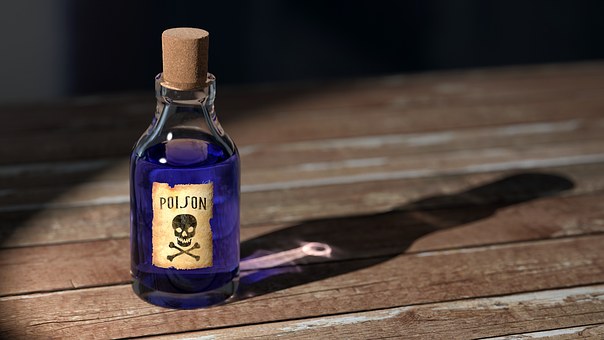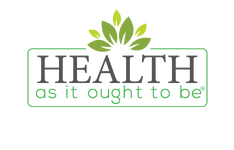
These 6 Normal Foods Are Banned In Other Countries
America is a weird place.
We’re all about freedom and liberty (as we should be) but at times we go so overboard that we’ll refuse to get rid of things that are part of our culture, even if we know they are bad for us.
And when it comes to foods, it’s quite ridiculous what we’ll tolerate.
Today I wanted to give you a heads up on a few foods that are banned the world over. (Except in American grocery stores.)
Armed with this knowledge, you’ll be able to better protect your health as you fill your body with fewer of these foods and with far healthier options.
6 Foods Sold In America
That Are Banned Elsewhere

1 - Bread With Potassium Bromate - BANNED in Canada, China and the EU
If you’re buying regular bread off the store shelves (which I don’t recommend in the first place as gluten is unhealthy in its own right) it’s likely been made with potassium bromate.
This chemical is used in commercial baking because it helps bread finish faster and it also makes the dough more spongy and elastic.
While that might be appealing from a baker’s perspective (or for a consumer who needs bread to feel and look a certain way) it’s dangerous to your health.
Studies have shown too much potassium bromate has been known to cause kidney and nerve damage, disrupt thyroid function and has also been linked to problems with digestion and immune health.

2- Ractopamine-Tainted Meat - BANNED in 160 countries including the EU, China, Russia
If you want to avoid this disastrous food product then you best steer clear of feedlot livestock.
Generally, the cheaper the meat you buy, the more likely it’s been hit with ractopamine, a growth stimulant used on any number of farm animals including chickens, cows, turkeys, pigs, and more.
Ractopamine has been shown to induce problems with cardiovascular function and has been linked to birth defects and hyperactivity.

3 - Food Colors - BANNED in most of the EU
There are a myriad of food colorings out there, things like Yellow 5, Blue Lake 10, Red 40 and more.
Food colorings might make food look more appetizing, but when you see what they’re from (hint, coal tar and oil) and what they do to your body, you might rethink eating foods with added food colorings.
According to Food Safety News:
“The food industry dumps over 15 million pounds of the dyes studied into the food supply each year. Three of the dyes carry known carcinogens, and 4 can cause serious allergic reactions in some consumers. New studies show that seven of them contributed to cancer in lab animals, including brain and testicular tumors, colon cancer, and mutations.”
Many of the others are linked to brain and nerve damage, along with birth defects.

4 - Mechanically Separated Meats - AKA “Pink Slime” - BANNED in Canada, UK, and EU.
Mechanically separated meats are in many low-grade meat products, foods you might consider normal, but aren’t.
A few of these foods include hot dogs, sausages, and frozen meat entrees.
Mechanically separated meat, or pink slime, is made up of low-grade beef trimmings and meat by-products. They usually take these meat products and then throw them in a large bath full of a chemical called ammonium hydroxide, This turns it into a gelatinous slime, which you eat.
The reason it’s so dangerous is because of the ammonium hydroxide, which has been linked to numerous health problems including producing tissue damage on mucous membranes. The human digestive system is basically one long mucous membrane from mouth to finish. Repeated or prolonged exposure to ammonium hydroxide can lead to health deterioration through accumulation within human organs.

5 - Farm Raised Salmon - BANNED in Australia and New Zealand
In the past few years the push for Americans to eat more heart healthy salmon has created an increased demand on the natural supplies for salmon.
Resourceful food providers, trying to localize supply and cut costs, started farming salmon some years ago.
And while it sounds like a decent fix for a major problem, the facts show it’s introduced its own set of problems.
For one thing, the salmon don’t eat the same food they would if they were in the wild. Instead, they’re given a diet of GMO foods (mainly grains) mixed with chemicals such as synthetic astaxanthin (derived from petrochemicals) and antibiotics to help simulate natural color and keep them from developing diseases. These chemicals are in turn ingested by the consumer.
Not good. As OneMedical.com reports
“A 2003 report from the Environmental Working Group (EWG) found that seven out of ten farmed salmon purchased in grocery stores in San Francisco, Washington, DC, and Portland were contaminated with cancer-causing polychlorinated biphenyls (PCBs) at “levels that raise health concerns.”
Additionally, farmed salmon has been found to contain toxic chemicals, methylmercury and dioxins, and farms have been accused of polluting the oceans, fostering disease, and spreading sea lice. Salmon farms have also been criticized for other questionable practices, including the content of the feed, which is often supplemented with chemicals to give the fish their pink color (wild salmon develop it naturally).”

6 - Drinks With Brominated Vegetable Oil (BVO) - BANNED in the European Union and Japan
I’m certain many of my patients already know the dangers of sodas, but if you need a little more convincing, consider that citrus flavored sodas like Mountain Dew contain a chemical called brominated vegetable oil (BVO).
BVO comes from bromine which is used in the manufacturer of furniture and other products as a flame retardant. And as you might suspect, that can have some potentially negative health consequences.
So What Are Your Options?
After you read that kind of disheartening information, you might wonder what your options are for eating healthy.
I know it can be discouraging, so here’s my recommendation.
Always read food labels, many of these ingredients are disclosed on packaging, so you can avoid them with minimal effort.
In the case of meats, I recommend getting what you can locally at farmers markets, co-ops, or stores that are committed to sourcing sustainable meat supplies. Check labels here too, if it says wild caught (for fish) or pasture raised (for animal products) then you’re probably getting legitimately clean food.
It’s as simple as that.
Also, don’t become discouraged if you happen to eat foods that are less than ideal. I know it’s hard to eat well when you live in a country that isn’t committed to healthy living, so give yourself some grace, understanding that eating poorly occasionally isn’t going to kill you.
Talk soon,
Dr. Wiggy
www.HealthAsItOughtToBe.com



